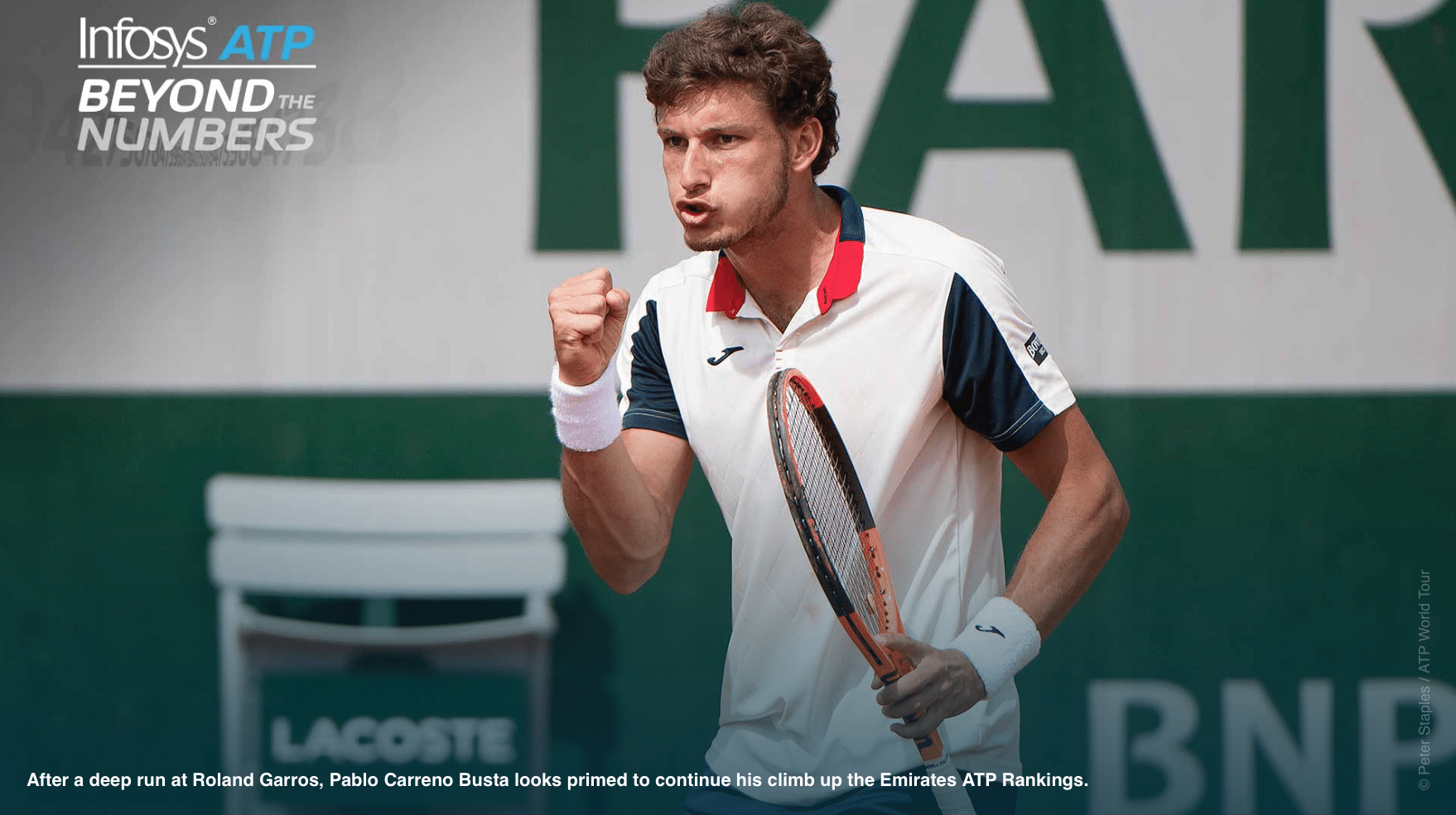Pablo’s Pathway.
Follow his footsteps to the promised land.
25-year-old Spaniard, Pablo Carreno Busta, is having the best season of his life. He currently has his career-best ranking of No. 17 in the world. It’s an outstanding achievement to break into the coveted Top 20 and don’t be surprised to see him crack the Top 10 later this year or early 2018.
Here’s his performance for the past three seasons.

Pablo is putting up some pretty impressive numbers. We are going to drill down on three focus points.
Improve Your Singles Strategy With These Five Strategy Webinars
Webinar 1: Winning Singles Strategy
Webinar 10: Primary & Secondary Patterns
Webinar 23: Point Score Strategy
Focus 1: 22K+ points
Pablo has played a lot of tennis in the past two and a half years. 22K+ points – all over the planet. This is the body of work that has taken him from outside the Top 60 into the Top 20. What is so amazing is the following breakdown:
- 22,119 points played
- 11,257 won
- 10,862 lost
- Won just 395 more points than he lost
- Represents a 1.8% advantage
This is the reality of our game. We play a sport of incredibly small margins… over incredibly big distances. Think of how many flights, how many airline miles logged, how many hotel nights, how many practices, and how much time in the gym it took to win 395 more points than he lost over 2 1/2 years. It’s mind-blowing, really…
Focus 2: Losing 10,862 points
That’s a huge amount of points to lose. It’s also a very necessary amount, that helped fuel Pablo’s rise to the Top 20. Now, think about this for a second. Pablo has had 10,862 opportunities to get down on himself, to get sad, mad, or frustrated about losing a point. You just can’t let yourself go there… It creates too much of a mental burden to carry around, and you end up beating yourself much more than the opponent does.
The lesson here is crystal clear – you are going to lose a lot of points on your journey upward. The best way to handle them (mentally & emotionally) is this way:
- 1) Review The Point
Figure out the exact reason you lost the point. Did it have to do with footwork, or technique, bad shot selection, too much power, not enough spin, or poor contact outside of the sweet spot of the racquet? Identify the problem.
- 2) Fix It
It’s soooo easy to dwell on the point you just lost. Don’t. Once you have identified the problem, fixate on the solution. What could you have done better? How do you avoid this mistake in the future? Focus on the “fix” instead of the error.
- 3) Flush It
Once you have identified the problem, and mentally corrected the problem, get rid of it. Errors should live in “short-term” memory, where they are quickly “flushed” from the mind. Once it’s gone, you can’t dwell on it anymore. You can’t continue to beat yourself up for the next 20 minutes, or two weeks, about that particular error.
Focus 3: Career Numbers
Here are Pablo’s career numbers.
- Matches: Won 102 / Lost 98
- Points: Won 50%
You look at a guy making millions of dollars, in the Top 20 in the world, and you think he may as well be Superman. But when you research Pablo’s overall body of work, you see just how close things really are. Once again, tennis is a game of insanely small margins, which is why it is so critically important to know the higher percentage patterns of play when serving, returning, rallying, and approaching. That’s what the 25 Golden Rules of Singles Strategy is all about.
Pablo lost in the 1st round of Wimbledon last year to No. 7, Milos Raonic, 7-6(4), 6-2, 6-4. He was unseeded at The Championships in 2016. He will most likely be a 17-24 seed this time around and will not face another seeded player until the 3rd Round. He made the Rd. 32 at the Australian Open this year, and the Quarters of the French. If he wins a few rounds at SW19 this year, he will be a lot closer to 10 in the world than 20 in just a couple of weeks.
For the rest of the Carreno-Busta analysis on the ATP website, click HERE.
Cheers,
Craig

